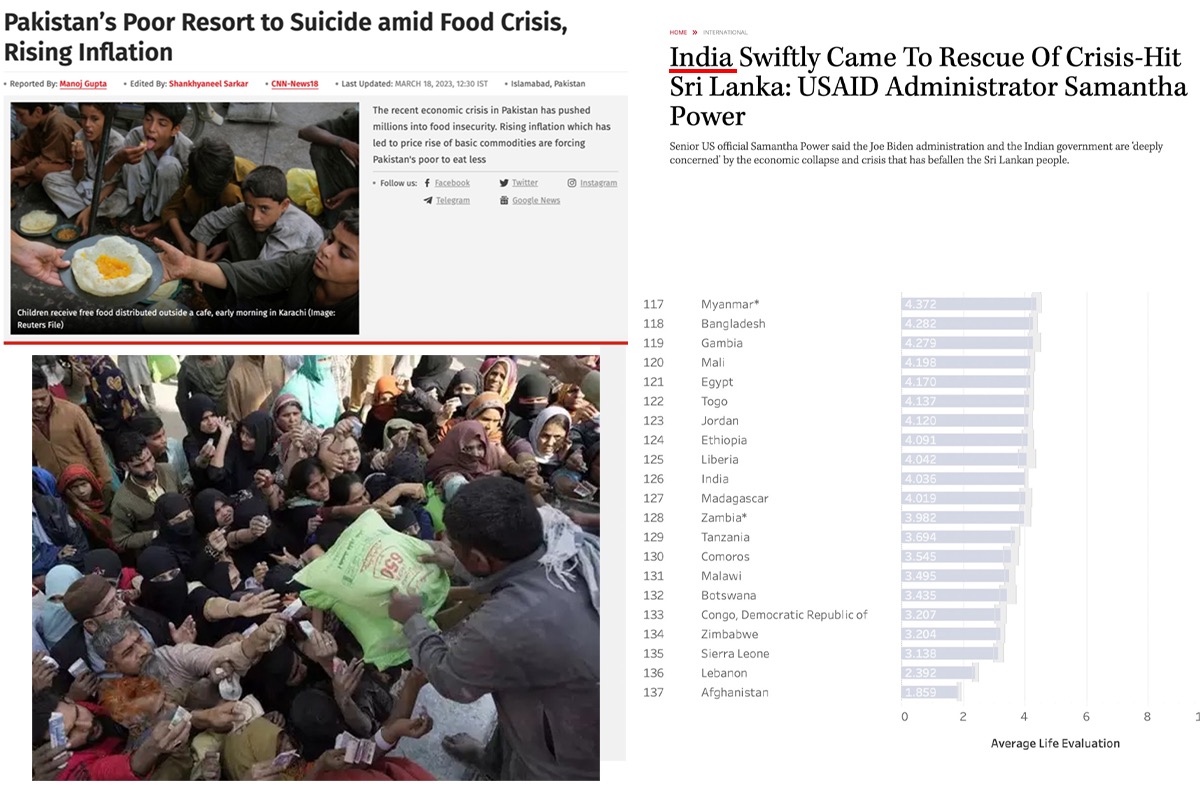Hordes of Westerners come to India every year in search of meaning, purpose, spiritual enlightenment and that elusive thing called happiness. Yet, when it comes to statistical evaluation, somehow, India always ends up at the bottom of the list of Happiness Index released by the United Nations on March 20 of every year. March 20 is observed as the World Happiness Day.
Happiness is an abstract, subjective concept that it’s almost impossible to measure it. The study largely relies on unscientific self-reported questionnaires rather than real markers, with questionable sample sets that may not be representative of a socio-economically diverse country like India.
This year India is ranked at 126 out of 137 countries in the just released World Happiness Report. Totalitarian Saudi Arabia is placed at 30, war-ravaged Ukraine where teenagers are being forcefully drafted into military services gets a respectable spot at 92.
The only countries India performs better than are Afghanistan, Zambia, Lebanon, Tanzania, Congo etc.
Sri Lanka that has been virtually rescued by India with financial aid gets 112th spot and pauper Pakistan with no food, electricity, an unassailable debt trap, and neverending political mayhem to top it all – miraculously performs better than India.
Well, may be Indians don’t need to be all that disheartened. We do perform a tad bit better than last year. According to the World Happiness Report 2022, India ranks 136th, tenth from the bottom of the list, lagging behind its neighbouring nations like Nepal, China, Bangladesh and Sri Lanka.
This year too all our neighbours except Afghanistan perform way better than us.
The biggest flaw of the study is that it doesn’t take real data, and markers into consideration.
Happiness is hidden in the aspirations of a society. But there are hardly any questions on that. Similarly, suicide rates are not even considered as one of the markers. Japan has a far higher suicide rate compared to India, yet it secures 47th position. Similarly, Sweden, which is considered to be a model country, too has a high suicide rate. As per 2018 data it stands at 14 people 100,000 compared to India’s 12, just a bit less than that of France, which features at rank 21.
Instead the happiness Index is measured on several hard to pin down concepts like – freedom to make life choices, generosity, ‘perception’ of corruption, and something called ‘dystopia’.
As per the report, “Dystopia” is an imaginary country that has the world’s least-happy people. “The purpose of establishing Dystopia is to have a benchmark against which all countries can be favorably compared (no country performs more poorly than Dystopia) in terms of each of the six key variables. The lowest scores observed for the six key variables, therefore, characterize Dystopia. Since life would be very unpleasant in a country with the world’s lowest incomes, lowest life expectancy, lowest generosity, most corruption, least freedom, and least social support, it is referred to as “Dystopia,” in contrast to Utopia.”
India certainly is not a perfect country. Our social security, education system, health care system need to improve for its citizens to feel truly protected. But it is also true that as one of the emerging economies and global leader in the geo-political sphere, a thriving diaspora, and being a democratic country that does offer a great degree of individual freedoms to its citizen we cannot be compared with the likes of Paksitan, China, or Bangladesh.
If at all projects like Happiness Index want to come across as credible trends and data interpreters they need to be far more diligent in the way they collect data in culturally diverse countries like India. Or else, they not only lose credibility but also miss out on the opportunity to provide actual interpretative and predictive data that could serve mankind.

